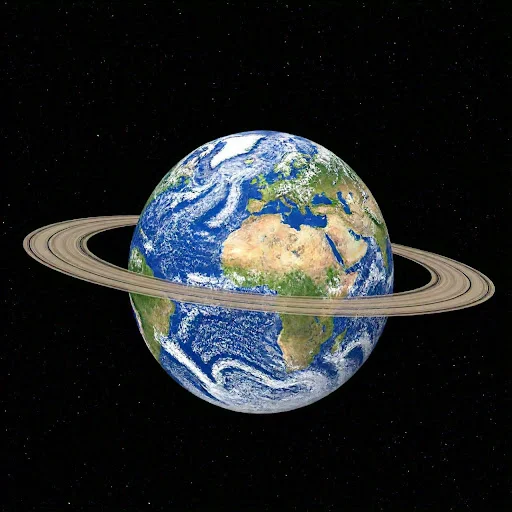- Get link
- X
- Other Apps
- Get link
- X
- Other Apps
Have you ever gazed at Saturn through a telescope and marveled at its magnificent rings? Now, imagine waking up every morning, stepping outside, and seeing Earth adorned with similar breathtaking rings arching across the sky. A world where our nights are illuminated by a celestial phenomenon so vivid that it transforms human life as we know it. Intrigued? Let’s delve into this fascinating “what-if” scenario!
The Formation of Earth's Rings
To envision Earth with rings, we first need to understand how they could form. Rings around planets are typically composed of ice, rock, and dust, often resulting from destroyed moons or comets. For Earth, this could have happened millions of years ago, perhaps due to a collision with a massive celestial body or the disintegration of a rogue asteroid. Unlike Saturn's distant rings, Earth’s rings would orbit closer, creating a dazzling spectacle visible from the ground.
How Would Earth's Rings Look from the Ground?
The appearance of Earth's rings would vary based on your location:
At the Equator:
People living near the equator would see the rings as a thin, glowing arc that stretches across the sky, resembling a permanent rainbow of light.At Mid-Latitudes:
In regions like New York or Rome, the rings would form a striking "archway," dominating the horizon with their ethereal beauty.At the Poles:
Near the poles, the rings would look like luminous bands circling the zenith directly overhead. Combined with auroras, the night sky here would be otherworldly.
Day and Night Would Change Forever
Earth's rings would drastically alter how light interacts with our planet. Here’s what might happen:
Brighter Nights:
The rings would reflect sunlight, creating a glow in the sky even on moonless nights, making darkness almost obsolete. Stargazing would never be the same.Unique Shadows:
Shadows cast by the rings would paint intricate patterns on the ground, creating surreal landscapes during the day.
Impact on Climate and Ecosystems
The rings wouldn’t just be eye candy; they’d have profound effects on our planet’s environment:
Altered Weather Patterns:
The rings could block sunlight in certain regions, leading to cooler climates under their shadow. Some areas might even become uninhabitable due to drastic temperature changes.Disrupted Ecosystems:
Animals that rely on darkness for survival, such as nocturnal creatures, would struggle to adapt to brighter nights, potentially altering entire ecosystems.
Cultural and Technological Implications
Humans are deeply influenced by what they see in the sky. If Earth had rings, they would likely play a central role in our culture and technology:
Art and Mythology:
Imagine how ancient civilizations would have woven the rings into their myths, stories, and religions. They might have been worshipped as divine symbols.Navigation and Science:
The rings could serve as a natural compass, helping early explorers find their way. Modern scientists would have an entirely new frontier to study, sparking discoveries beyond our imagination.
Challenges to Humanity
While the rings would be visually stunning, they’d pose significant challenges:
Space Travel:
Rockets and satellites would have to navigate through dense fields of debris, complicating space exploration.Increased Meteor Showers:
Fragments from the rings could occasionally enter Earth’s atmosphere, causing frequent meteor showers—or worse, collisions with populated areas.
Would Life Be Better or Worse?
The idea of Earth with rings is both awe-inspiring and terrifying. On one hand, they would provide a constant reminder of the universe's beauty, inspiring generations to dream bigger. On the other hand, the practical challenges they bring could outweigh their allure.
Conclusion: A Universe of Possibilities
Though Earth with rings like Saturn is pure speculation, it’s a reminder of how extraordinary our universe is. While we may never witness such a sight in reality, imagining it fuels our curiosity and appreciation for the world we live in. Until then, we can only look to Saturn and wonder, "What if?"

Comments
Post a Comment